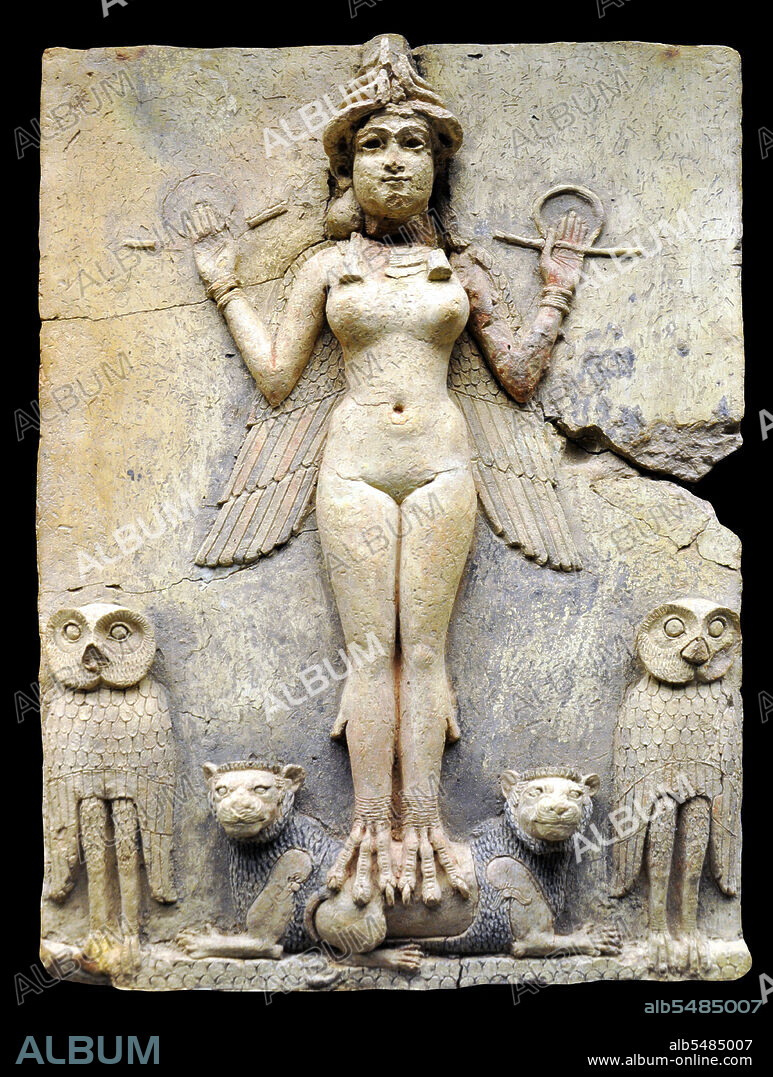alb5485007
Terracotta bas-relief of the 'Queen of the Night', often considered to be an aspect of the goddess Ishtar, also known as the 'Burney Relief'. Old Babylonian, c. 19th century-18th century BCE.

|
Add to another lightbox |
|
Add to another lightbox |



Buy this image.
Select the use:

Title:
Terracotta bas-relief of the 'Queen of the Night', often considered to be an aspect of the goddess Ishtar, also known as the 'Burney Relief'. Old Babylonian, c. 19th century-18th century BCE.
Caption:
The Burney Relief (also known as the Queen of the Night relief) is a Mesopotamian terracotta plaque in high relief of the Isin-Larsa- or Old-Babylonian period, depicting a winged, nude, goddess-like figure with bird's talons, flanked by owls, and perched upon supine lions. The relief is displayed in the British Museum in London, which has dated it between 1800 and 1750 BCE. It originates from southern Iraq, but the exact find-site is unknown. Apart from its distinctive iconography, the piece is noted for its high relief and relatively large size, which suggests that is was used as a cult relief, which makes it a very rare survival from the period. The relief depicts a naked female figure with tapering feathered wings and talons, standing with her legs together; shown full frontal, wearing a headdress consisting of four pairs of horns topped by a disc; wearing an elaborate necklace and bracelets on each wrist; holding her hands to the level of her shoulders with a rod and ring in each; figure supported by a pair of addorsed lions above a scale-pattern representing mountains or hilly ground, and flanked by a pair of standing owls.
Credit:
Album / Pictures From History/Universal Images Group
Releases:
Image size:
3650 x 4837 px | 50.5 MB
Print size:
30.9 x 41.0 cm | 12.2 x 16.1 in (300 dpi)
Keywords:
ANCIENT WORLD • ANT. OR.: MESOPOTAMIA • ANTIGUEDAD • ANTIQUITIES ORIENTAL: MESOPOTAMIA • ANTIQUITIES • ANTIQUITY • ASIA • ASIAN • BURNEY RELIEF • HISTORIA UNIVERSAL • HISTORIA • HISTORICAL • HISTORY • HISTORY. • IRAK • IRAQ • IRAQI • ISHTAR • MESOPOTAMIA • MESOPOTAMIAN • QUEEN OF THE NIGHT • RELIGION • SCULPTED • SCULPTING • SCULPTURE • SCULPTURE. • SCULPTURES • SCUPTURE • STONE CARVING
 Pinterest
Pinterest Twitter
Twitter Facebook
Facebook Copy link
Copy link Email
Email
